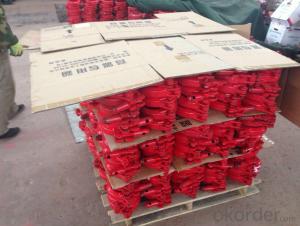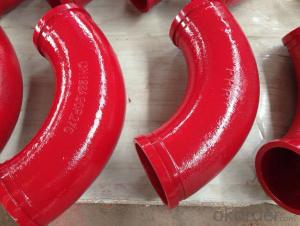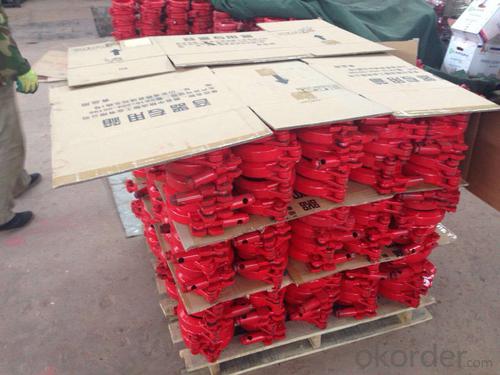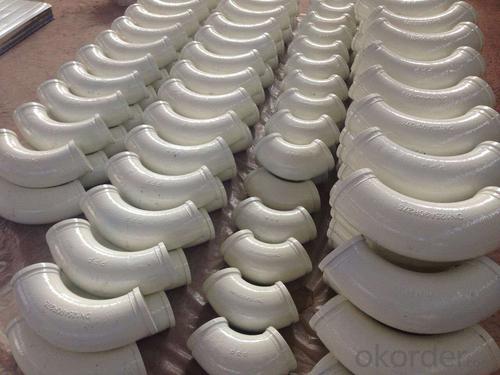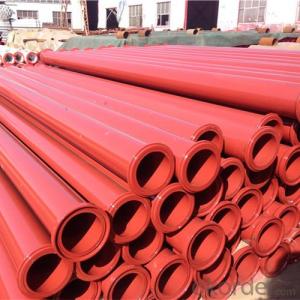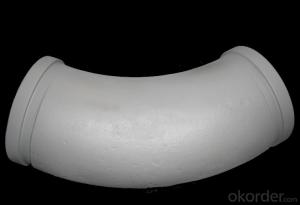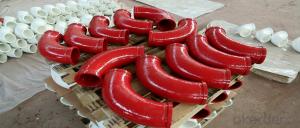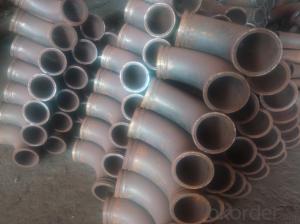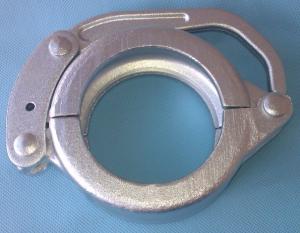CONCRETE DELIVERY ELBOW TYPE 90DEG R275 DN100
- Loading Port:
- Tianjin
- Payment Terms:
- TT OR LC
- Min Order Qty:
- 100 pc
- Supply Capability:
- 10000 pc/month
OKorder Service Pledge
OKorder Financial Service
You Might Also Like
concrete pump elbow table
Wear-resistant Single or Double Concrete Pump Elbow | |||||||
Type | Singe Elbow | Double Elbow | |||||
Model | DN125 | DN150 | DN175 | DN125 | |||
Material | Casting Steel ,ST52 | Inside | 40Cr | Outside | |||
Size | R275*90° | R275*90°+110 | 36° | F2000 | R275*90° | R275*90°+110 | |
R275*45° | R275*90°+211 | R400*30° | A3000 | R275*45° | R275*90°+211 | ||
R275*25° | R275*90°+411 | R400*45° | 471B | R275*25° | R275*90°+411 | ||
R275*20° | R275*90°+424 | R400*30° | 571B | R275*20° | R275*90°+424 | ||
R275*15° | R275*45°+170 | R488*90° | A1000 | R275*15° | R275*45°+170 | ||
R180*90° | R275*45°+310 | R500*90 | C1000 | R180*90° | R275*45°+310 | ||
R232*60° | R275*45°+310 | R280*90° | B2000 | R232*60° | R275*45°+310 | ||
R240*36° | 20°Lengthen | R240*36° | 20°Lengthen | ||||
R240*30° | 25°+740 | R240*30° | 25°+740 | ||||
R240*15° | 40°Zoomlion | R240*15° | 40°Zoomlion | ||||
R385*29° | R385*29° | ||||||
R315*33° | R315*33° | ||||||
Technic | Forged | ||||||
Average life | 25,000cubic | 50,000cubic | |||||
Appliciation | Used in concrete transport in construction work | ||||||
1.product profile:The double layer concrete pump elbow is developed by ourselves through new
technology and process.
2.characteristic:the inner layer of this concrete pump elbow undergoes heat treatment,and then the rigitiry can reach 62-65HRC.
3.characteristic:the outer layer of the concrete pump elbow possess good toughness properties
to protect the inner layer,so the security of the elbow is improved.
4.life:the experiment done abroad shows that the life of our concrete pump elbow can reach 35000-50000cbm,got the customers' praise
5.Beside the double layer concrete pump elbow,we produce all kinds of concrete pump parts,
straight pipe hose flange coupling and so on.
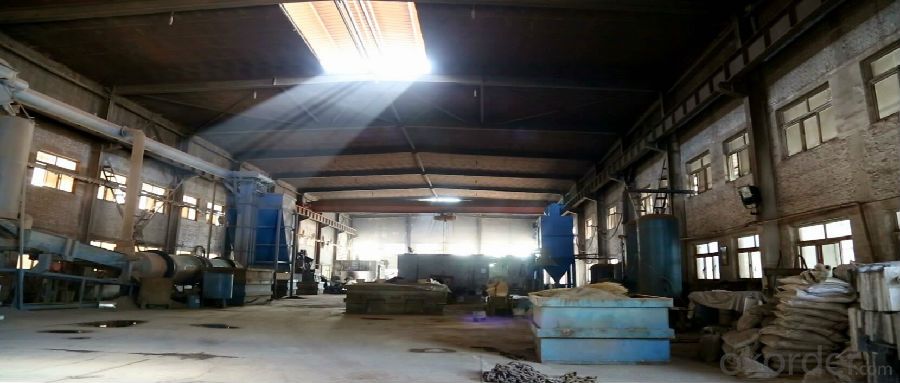
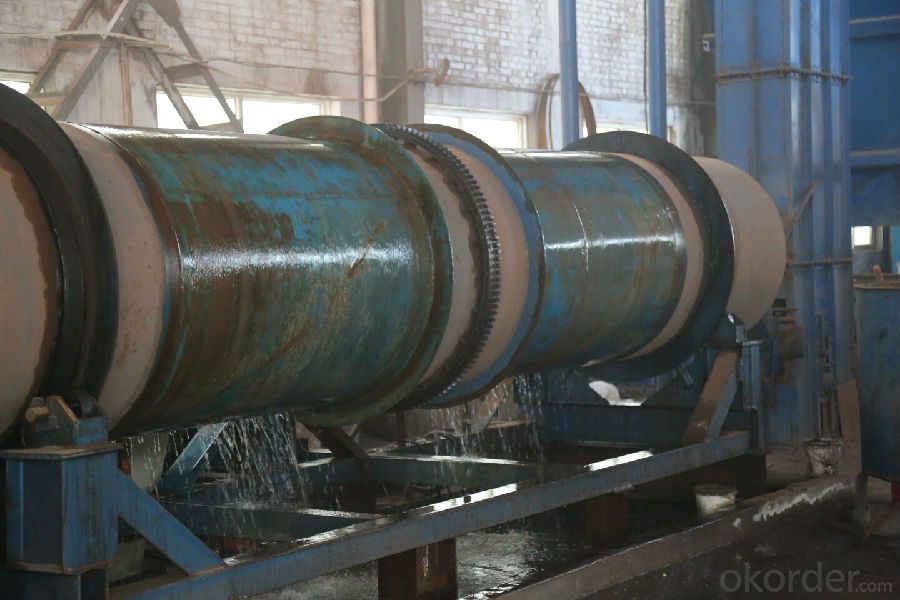

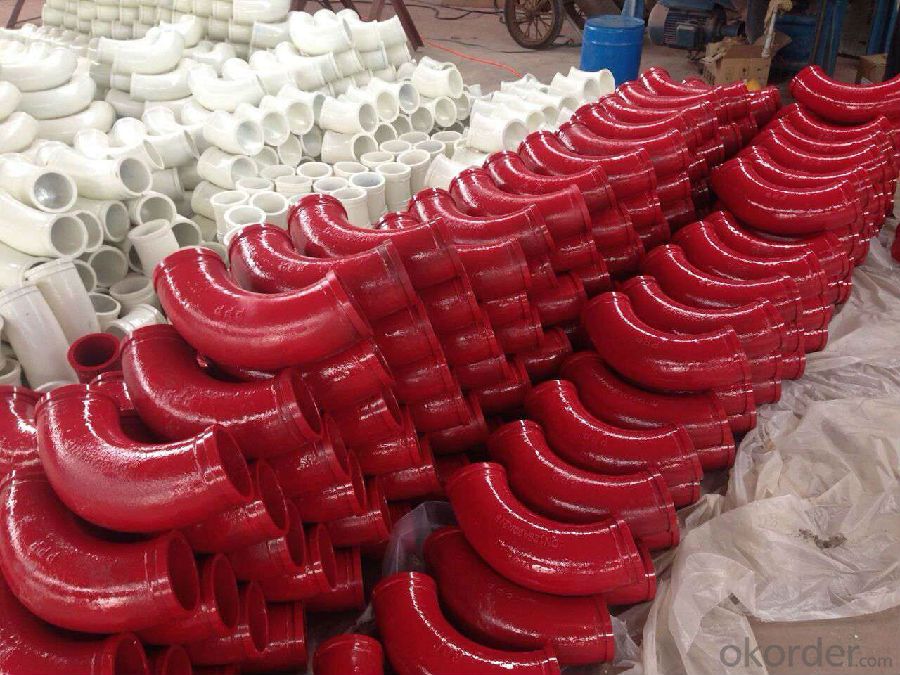
- Q: How do I properly maintain and replace hydraulic cylinders in concrete pump spare parts?
- Proper maintenance and replacement of hydraulic cylinders in concrete pump spare parts requires a systematic approach. Firstly, regular inspections should be conducted to identify any signs of wear, leakage, or damage. It is important to clean the cylinders regularly to remove any debris or contaminants that can cause premature failure. To maintain the hydraulic cylinders, it is crucial to follow the manufacturer's recommendations for lubrication and fluid changes. Ensure that the hydraulic fluid levels are checked and maintained within the specified range. Additionally, monitor the pressure and temperature of the system to detect any abnormal conditions that may indicate a problem with the cylinders. When it comes to replacement, it is essential to use genuine and high-quality hydraulic cylinders that meet the specifications of the concrete pump. Consult the manufacturer's guidelines for the correct procedure for removing and installing the cylinders. Proper alignment and adjustment of the cylinders are crucial to ensure their optimal performance and longevity. In summary, proper maintenance involves regular inspections, cleaning, lubrication, and monitoring of the hydraulic system. Replacement should be done with genuine parts and following the manufacturer's guidelines. By following these steps, you can ensure the reliable and efficient operation of hydraulic cylinders in concrete pump spare parts.
- Q: How often should the concrete pump wear plate be replaced?
- The wear plate of a concrete pump needs to be replaced based on several factors such as the type and volume of concrete being pumped and the pump's operating conditions. Generally, wear plates are designed to endure a certain level of wear and tear before replacement is necessary. It is advisable to regularly inspect the wear plate to identify any signs of excessive wear, such as visible cracks, erosion, or a significant reduction in thickness. By conducting regular visual inspections, you can determine when it is time to replace the wear plate. Furthermore, monitoring the pump's performance and efficiency can offer insights into the wear and tear on the wear plate. If you notice a noticeable decrease in the pump's output or an increase in required pumping pressure, it may indicate that the wear plate needs replacement. However, it is vital to consult the manufacturer's guidelines and recommendations for your specific concrete pump model. These guidelines often provide information on the expected lifespan of the wear plate and the recommended replacement intervals. Following these guidelines will help ensure optimal performance and longevity of your concrete pump.
- Q: How do I properly maintain and replace hydraulic valves in concrete pump spare parts?
- Proper maintenance and replacement of hydraulic valves in concrete pump spare parts is essential to ensure the smooth operation and longevity of the equipment. Here are some steps to follow: 1. Regular Inspection: Regularly inspect the hydraulic valves for any signs of wear, damage, or leakage. Look for cracks, corrosion, or any other visible defects. It is important to catch any issues early on to prevent further damage. 2. Cleanliness: Keep the hydraulic valves clean to prevent dirt, debris, or contaminants from entering the system. Use a suitable cleaning agent and a lint-free cloth to wipe the valves and remove any buildup. 3. Lubrication: Proper lubrication is crucial for the smooth operation of hydraulic valves. Refer to the manufacturer's guidelines to determine the appropriate lubricant and the recommended schedule for lubrication. Apply the lubricant as per the instructions provided. 4. Replacement: If a hydraulic valve is damaged or worn out beyond repair, it is important to replace it promptly. Identify the correct replacement valve by referring to the equipment's manual or consulting with the manufacturer. Ensure that the replacement valve matches the specifications required for your concrete pump. 5. Professional Assistance: While some maintenance tasks can be done by operators, it is advisable to seek professional assistance for complex maintenance and replacement procedures. Professional technicians have the expertise and knowledge to handle hydraulic valves safely and effectively. 6. Safety Precautions: Always adhere to proper safety protocols when working with hydraulic valves. Remove any sources of pressure and fully depressurize the system before attempting any maintenance or replacement. Wear appropriate personal protective equipment, such as gloves and safety goggles, to protect yourself from potential hazards. Overall, regular maintenance, timely replacement, and adherence to safety guidelines are essential for properly maintaining and replacing hydraulic valves in concrete pump spare parts. Following these steps will help ensure the reliable and efficient operation of your equipment.
- Q: What is the purpose of a concrete pump remote control battery?
- The purpose of a concrete pump remote control battery is to provide power and mobility for the remote control device used to operate a concrete pump. The remote control allows the operator to conveniently control the movements and functions of the concrete pump from a distance, without having to be physically present at the pump itself. The battery supplies the necessary electrical energy to the remote control, enabling it to transmit signals and commands wirelessly to the concrete pump. This allows for greater flexibility and ease of operation, as the operator can move around the construction site while maintaining control over the concrete pump. The battery also ensures uninterrupted operation of the remote control, allowing for efficient and accurate control of the concrete pump's functions.
- Q: Can I repair concrete pump spare parts instead of replacing them?
- In certain instances, it is indeed possible to repair concrete pump spare parts instead of opting for replacement. There are various components of concrete pump spare parts, including seals, gaskets, valves, and hydraulic elements, that can be effectively repaired. However, the feasibility of repair is contingent upon the severity of the damage and the particular part in need of attention. In situations where the damaged parts are excessively worn or damaged, an effective repair may not be feasible, thus necessitating replacement. To ascertain whether repair is a practical option for your specific concrete pump spare parts, it is imperative to seek advice from a professional or reach out to the manufacturer.
- Q: What are the different types of concrete pump hydraulic filters?
- There are three main types of concrete pump hydraulic filters: suction filters, return line filters, and pressure line filters. Suction filters are located at the inlet of the pump and prevent debris from entering the system. Return line filters clean the hydraulic oil as it returns from the system back to the reservoir. Pressure line filters are installed in the discharge line and remove contaminants before the oil reaches the hydraulic components.
- Q: If the concrete pump valve jam how to judge and deal with?
- The valve plug is formed gradually, the main reason is that after the completion of concrete pump, no time to use high-pressure water washing, resulting in concrete residue in the tube after a considerable period of time, gradually thickening, accumulation of consolidation, resulting in congestion.
- Q: How can one determine the correct weight and balance requirements for concrete pump spare parts?
- To determine the correct weight and balance requirements for concrete pump spare parts, one should refer to the manufacturer's specifications and guidelines. These documents usually provide information on the recommended weight limits and distribution for each spare part. Additionally, consulting with industry professionals or engineers with expertise in concrete pump systems can help ensure accurate weight and balance calculations.
- Q: How can a malfunctioning control panel affect the pump's operation?
- A malfunctioning control panel can affect the pump's operation by causing errors in controlling the pump's speed, pressure, or flow rate. It can also lead to inaccurate monitoring of the pump's performance, failure to detect faults or abnormalities, and difficulty in troubleshooting issues. Ultimately, a malfunctioning control panel can compromise the pump's efficiency, reliability, and overall functionality.
- Q: What is the function of a concrete pump remote control antenna?
- The primary role of a concrete pump remote control antenna is to establish a wireless connection between the remote control device and the concrete pump. This connection enables the operator to remotely manage various functions of the concrete pump, including initiating and terminating the pump, adjusting concrete speed and flow, and controlling boom movements. The antenna receives signals transmitted by the remote control device and transmits them to the concrete pump, enabling the operator to safely control the pump from a distance. By providing the operator with improved visibility of the pump and its surroundings, while maintaining complete operational control, this technology contributes to enhanced efficiency, accuracy, and safety at construction sites.
Send your message to us
CONCRETE DELIVERY ELBOW TYPE 90DEG R275 DN100
- Loading Port:
- Tianjin
- Payment Terms:
- TT OR LC
- Min Order Qty:
- 100 pc
- Supply Capability:
- 10000 pc/month
OKorder Service Pledge
OKorder Financial Service
Similar products
Hot products
Hot Searches
Related keywords
